In this post, we're going to be asking a question that I've been seeing pop up all over the place, which is: How do I get a job in building automation?
We are going to look at how to get a job, we’ll view some job postings, and then I’m going to teach you how to analyze them. I'm going to teach you how to potentially find the hiring manager, and how to bypass the HR screenings. Then we’ll cover why you would want to get a job in building automation and what building automation is all about.
Why should you listen to me about how to get a job in building automation? Well, I'm Phil Zito. I'm the founder and CEO of Smart Buildings Academy and we've trained over 10,000 folks in all aspects of building automation. I've gotten to see a lot of different job requirements, from OEMs, system integrators, contractors, building operators, engineers, etc. I understand how folks think, having been a former ops manager myself, when it comes to hiring people in to building automation.
First off, what is building automation? I'm not going to assume you know what it is. Quite simply, here's how I like to explain to people when they ask what I do. Think of a Nest Smart Home thermostat for your house. Now, think of a bunch of Nest Smart Home thermostats, but for a hospital. Pretty complex, right? Well add on to that complex ability, the need to control all of the systems that feed into those Nest thermostats. Obviously, you'd have to have a much more complex thermostat, right?
Well, that is where a control system comes in place. A control system simply processes inputs and then drives outputs. It does that through what is known as a direct digital controller. A direct digital controller takes inputs, puts in some logic, some code, processes that logic and drives outputs. That's all well and good, but those are pretty useless by themselves.
Enter the building automation system. The building automation system allows us to visualize, control, monitor, alarm, trend, do all these advanced capabilities. You can look at your DDC controller, you can see what it's doing, you can see the choices it's making.
Nowhere else in my life, since I left the military, have I had as much fun as building automation. I like to relate it to like adult Legos. Where else do you get to go, as a 20 something year old, and immediately impact things. You get to go and install these systems that are huge, and they are complex, and you get to learn IT, and mechanical systems, and electrical systems, and all sorts of other things.
So, there's so much to building automation, and that's just on the installation side. Not to mention, depending on where you're located in the world, you can make a six-figure salary within a couple of years in building automation. As far as job security goes, this is one of the last trades that will be outsourced or will be taken over by artificial intelligence. So, high salary, lot of fun, different every day, and great job security. That's why I think you should be in building automation.
Let's cut to the chase. How do you get a job in building automation? The first thing we have to do is figure out what we're trying to apply for. Well, let’s start by going to Google and typing in building automation technician job. Oh, look, there's 4,912 jobs!
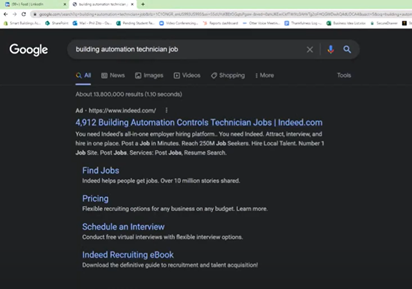
Now, let’s click on Control System Specialists. I believe they are customer of ours, so let's take a look at this job requirement.
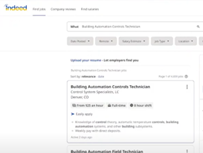
So, what do you need to do? You have to travel the job sites, so you have to be able to drive. You need to collaborate with folks, so you need to be able to get along with people.
Utilize blueprints, engineering specs and wiring diagrams to perform installation.
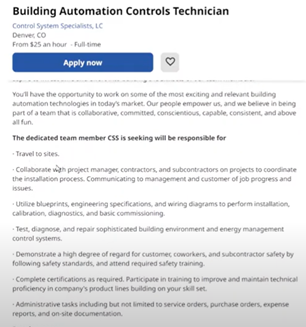
So, what does that exactly look like?
Well, you’re going to be asked to interpret the stuff on these types of drawings.
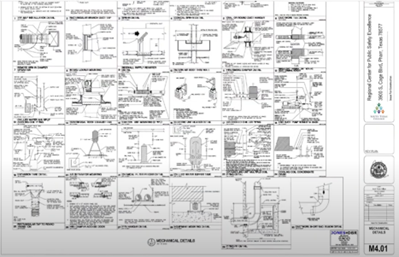
So, if you're someone who likes to play around with Legos, and build stuff, and read diagrams, this is kind of right up your alley. You're going to build this stuff up.
Then the job description says you’re going to test, diagnose, and repair building automation systems. Okay, what does that look like? Well, that looks like potentially logging into a control system.
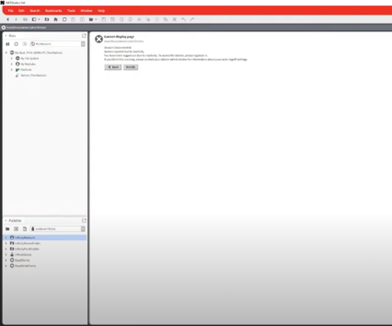
This is a Niagara Workbench with a basically, software supervisor that I've got stood up here. So, you'd log in, you'd have to test your points, so this is kind of a service role that I'm seeing right here.
It also says, complete certifications as required. So, if you have to do some OSHA or Niagara training, stuff like that.
What do you need to be able to do in order to do this?

It's saying, be a good worker. I mean, that's pretty much basic.

Then it says, having some knowledge of controls theory, automatic temperature controls, and this is where the excitement ends for a lot of people. They're like, “What do I do to get to this point,” because they're all fired up about it, and then they look and they see, oh, I need to have two years’ experience, or I need to have knowledge of stuff. What can I do?
Obviously, you know, we're a training organization. So, I'm going to be biased. So, I'm not even going to mention our programs, but I'm going to just walk you through like you've never heard of us.
So, what can you do to get to this point? Let me tell you what I did to get to this point. I got hired out of the military to work on control systems as an installer, and was told, “Hey, you're going to work on these systems,” and got thrown to the wolves. I grabbed the Honeywell Gray Manual. So, if you've never heard of that Honeywell Gray Manual, go to Google and type this:

When you do this, you can click on the first result and it will open the Honeywell Gray Manual. You're going to want to work through this first. This is going to help you understand controls theory. It's a little weak, in my opinion, in the HVAC side of things. It does kind of go through them, but it could be stronger. It does well though, in explaining control fundamentals, controls theory, and has a really solid thing on psychrometrics, which people don't teach enough.
Now, the next thing you're going to want to do is get this set up. So, the one software that I know is still pretty easy to get your hands on is Easy IO software. Most of the other software, you’ll have to go through distributors to get your hands on that and it has licensing requirements. You could still send a message to Easy IO and you can still get their CPT software, which will enable you to play with the control system.
So, what I recommend is an FW-08, and I'm talking like, lowest price, right?
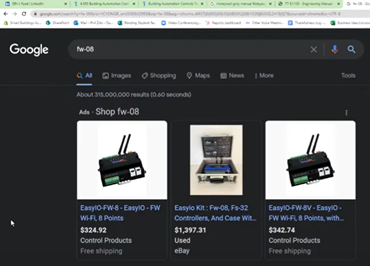
In an ideal world, you would be serious about this, and you would invest 2000-ish dollars on a lab kit. You'd go get some EDGE 10s, you'd go get yourself Niagara Workbench, and you would buy some IOs, and relays, and stuff. That would be ideal, and that's what I would want to do if I were you. But a lot of people don't have that disposable cash or the want to invest, and then they wonder why they don't ever get promoted or get raises.
So, I have no ties to any of the above products, and as many of you know, I don't go and promote any product over another. Okay, so you can buy an Easy IO-FW-8. I liked this controller because it does ComBus, wireless, and Ethernet. So, we're going to get to play with IP, we're going to get to play with wireless, and we're going to get to play with MSTP serial bus. So right off the bat, we're going to get a really good lab experience.

It's going to have a series of AOs and BOs, and some UIs. So, we're going to get some different input types, we're going to get some different output types, and we're going to get three different ComBuses. You can probably pick up two of these, then get the CPT software, and you can play with that.
Another company that is solid for labbing is going to be Contemporary Controls. They have the BASpi board that’s really inexpensive. It's based on the Sedona framework, which is very similar to Niagara. Niagara has anywhere between 30 to 50% market share, and almost every major original equipment manufacturer OEM has a specific product set built on Niagara. So, learning Sedona is going to get you pretty close to understanding Niagara. It's completely different than workbench, but you're going to learn things like drivers, setting up buses, etc.
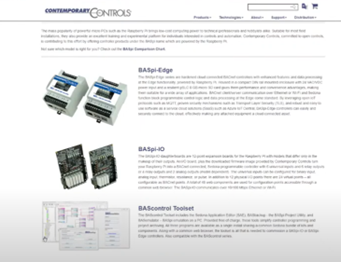
So, if I'm sitting in your shoes right now, I've picked up either two FW-08, or two BASpi-IOs, and I have the software. So, what do I do now? Now I'm going to bring you to the next tool that I like, which is Control SPEC Builder.
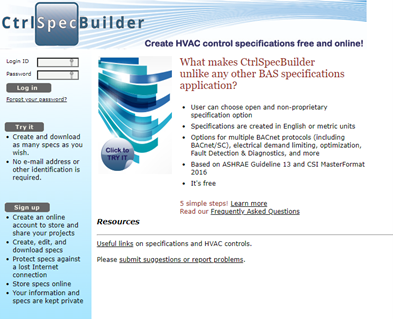
So, Control SPEC Builder is really solid and it's something I share with a lot of our students. So, from the main screen, you’ll click on “TRY IT” and you are going to be able to build out a project.
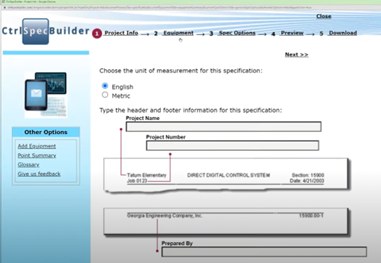
And at this point, I know you still don't have the HVAC knowledge to build out a project, but I'm going to kind of pull back and clarify how you get that HVAC knowledge and how you get that BAS knowledge to actually do this.
So, this is the next tool you're going to want because what I can do is, I can go to “Add Equipment,” and I can select like maybe a “Single Zone Unit”. That's a good one to run off one of those FW-08s.
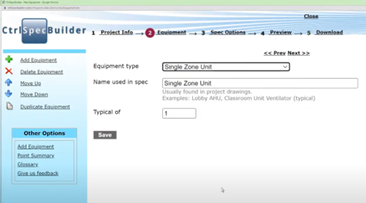
So, we click “Save” and now we can modify this unit to do whatever we want. We could do DX staging, which would be binary outputs. We could do things like cooling valve modulating, which would be analog outputs, and we can start to build all this out. What it'll allow us to do is build out a sequence of operations, a schematic, and a points list.
So, you've been probably thinking to yourself, when you saw those original documents, the mechanical and the specification, like how do I get my hands on one of those. You definitely can Google that, but the nice thing about this is it's going to build a sequence for you, it's going to build a schematic, and it's going to build a points list. This is what you can use in labbing.
Okay, so at this point, like we've skipped pretty far forward, and we haven't talked about the underlying skill set. What do you do to get that underlying skill set that you need, in order to be able to do labbing with all these things? Well, there's several resources. Obviously, I'm going to point you all to our YouTube page, everything on there is free, there's no opt in. Once you're at the page, you can just type in the search bar, building automation, HVAC, IT, etc, and you're going to find multiple videos on HVAC and BAS. This is what I recommend you focus on.
So, in BAS knowledge, we have the YouTube page, we also have the guides. What I would do is I would point you to our Ultimate Guide to Building Automation Systems. As you read through it, anything that doesn’t make sense, note it and you can either Google or search YouTube to dig deeper into it. Once again, I am showing you free resources. Obviously, there are paid resources that are much more structured, but I'm giving you the low-cost, free approach.
So, now you want to dig deeper. If you Google building automation architecture, and I’ll go even more specific and search building automation architecture siemens. Click Images, and you get several results.
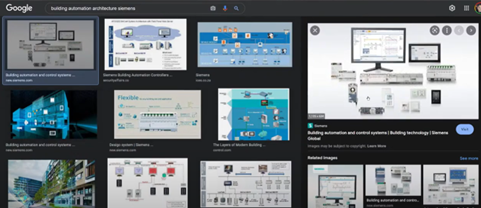
From here, I want to find what’s called a network riser. Okay, I found this network riser.
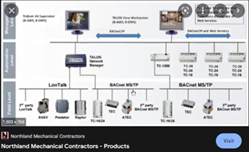
Once I have this network riser, I need to start asking myself, can I identify the devices? This is the first thing, right, architecture? I know there is a supervisory layer, these are field controllers. This is servers. Okay, great. I can identify.
Now I need to identify what each one of these systems does. So, what does a supervisory device do? Well, that's where we come back to our FW-08, or our Raspberry Pi. We start to use supervisory device functionality. We create field buses, we map in our field trunks, all of these things that we start to do.
Once we feel like we have an understanding of one of these devices, then we move to the next layer. I like to start at the supervisory device, and I like to move down from there. So, we've done our supervisory device, we've added one of our field controllers, we've configured our inputs and outputs. What do we do now?
Well, HVAC knowledge and HVAC theory is definitely something that's difficult to pick up, but it's not impossible. I would point you once again, to our website, to our blog series, and I would point you to typing in HVAC in the Search bar. You’ll see a bunch of articles on HVAC controls theory that you could learn. Those are going to be very beneficial to you.
Now you have HVAC, and you have BAS at a communicative level. Then you need to get solid on the electrical. So, for the electrical, one of the YouTube channels that I really like is The Engineering Mindset. I really like his videos. He keeps everything pretty simple and pretty basic. It's more geared towards engineering, but he does have a couple HVAC videos that are really nice.
I do feel like he leaves some stuff out, but I understand that it's coming from an engineering perspective. I mean, it's literally called engineering mindset, right? Good videos, in my opinion, and a good place to start. It's free resources on some basic HVAC theory, and some basic electrical theory.
Okay, so we come back to this job post for Control System Specialist. My next step wold be to look for the company, and I’d start at LinkedIn. From there, you’re going to want to look for employees at the company. Then we want to narrow it down, so this job posting is from Denver, so we’ll want to see which employees are in Denver. Then, once we know who the people are in Denver, we would want to see who the managers in Denver for this company are.
Okay, now I like to LinkedIn connect to that manager, and here's what you're going to write:
“I saw your job posting for XYZ. I am a motivated, reliable individual, who does a ton of building automation studying on my own time. I'd like to talk to you about the job position.”
Is that always going to work? No, but you're hitting the key points. One, you're reliable, you're motivated, and you have a passion for building automation outside of work hours. That means that outside of the work hours, you actually are studying building automation, and applying yourself.
Makes me think of one of our former students, Armando, who paid for training himself. Did a lot of work outside of hours. He would send me text messages on the weekend about the labbing he was doing, and he ended up, I think he's been in the industry a year and a half now, and he's a programmer. Already, like that fast. Boom, done because he applied himself.
So, you know, you find a job you want, you identify what they're asking for, you get that initial LinkedIn connection. Once you have that LinkedIn connection, now you need to address what is going on in this job description. So, they're saying knowledge of controls theory, automatic temperature control, building automation systems and other building subsystems.

So, what you can say to him/her is, I see in your job description that you need someone who is knowledgeable about this; here's how I'm knowledgeable about it, and here's how I became knowledgeable about it. I'd love the opportunity to have a quick phone call with you to demonstrate my knowledge, so you can test me on my knowledge, and so that we can have a discussion about this role.
Now, I know that's scary. I have a 16-year-old who recently got her license, and she was really worried about, what if I fail? What if I don't get the license? I simply told her, “Guess what? You learned what they're going to ask on the license test, and you study what you didn't know, and you come back.” There you go.
So, if they were to say, “I asked you about PID loops. You couldn't explain PID loops.” You say, okay, I don't understand PID loops. What do I do? Go to our YouTube page, type PID Loops in the Search bar and watch the 30-minute video on How do PID Loops Work?
I go to my FW-08 and CPT software, I create a PID loop, I go through it a couple times, I change settings, I understand how it responds. So, now I can go back to this person and say, “You know what, you said that I didn't understand PID loops. Well, guess what? I watched videos on PID loops. I researched PID loops. I practiced them on my home lab. So, what other questions do you have for me?
The thing is, managers are not going to have ever experienced this in people before. They've never experienced someone who goes, takes the feedback from the interview, learns the knowledge and the material, and then comes back and says, “Okay, test me again.” That persistence, that knowledge is either going to get you told, “Don't ever call me again,” or more likely is going to get you a potential job offer. The best thing is, is you don't have to do it with one company at a time since there's over 100,000 BAS jobs open at any given point in time.
You can take this exact same process and go to another company and another company. As you start to get asked questions by these companies, you're going to learn what you do and do not know, and because of that, you're going to learn what you're going to be asked. I'm telling you, if you do this exact process I've outlined, you can get a job pretty fast in building automation. Will it be a programmer job? No, of course not, but it will be an installer or technician job. That will get your foot in the door, that will then start getting you experience on project work or service work, which is going to enable you to be able to move up the ranks.
Now, I had someone reach out with programming experience looking for a BAS job. So, maybe that is programming and service experience, right? Should be pretty easy to leverage that into BAS. So, why does this person not have a BAS job, if they want one? Could be possible lack of resume. Could be the market they're in doesn't have a lot of BAS jobs available, or maybe the person just didn't know how to approach it.
So, what you have to do is do an honest assessment of your skills. I like to use mind-mapping software, and I like to use the software called X mind. What I like to do is just grab a mind map and break it all down. My main topic would be Skills I have, and then I’d start listing my skills, like service experience.
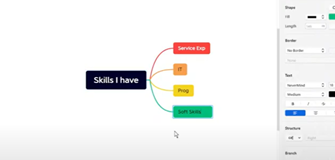
Then I would say, “Okay, what does that mean to people?” Well, I'm able to troubleshoot electrical, troubleshoot mechanical, etc, and I would detail that out, and I would add a value associated to that. Then I would say, IT, and list out my IT knowledge. Then maybe programming, and my knowledge of programming. I’d keep going until I had all my skills list with their values outlined. What you've now created is essentially a skill matrix. You've created a matrix on which you can overlay this matrix on any job you run into.
So, if we pick another building automation job, and this is a building automation and service technician in New York.

As we start to dig into this, it says, 3-7 years of building automation experience, or deep experience with mechanical systems, and a desire to learn building automation. So, that's like an inroad, right there. That's a good position for our skills matrix because this person can take their service experience, and they can overlay it on to this right here.
So, that's an example of taking a skill matrix and using that skill matrix one, to communicate what you do and do not know, as well as being able to use it to kind of be a source of truth of whether or not you really can apply for a position.
You know, this position may make someone think, “I've never done building automation,” but then they actually take an honest look, and they realize, “I've worked with this software. I've done this, I've done that, and while it may not have been called Building Automation, that may not have been my title, my experience matrix shows that I can do it.” So, then it's a matter of just taking your experience matrix, slicing up this job description, and pulling out what's in it.
Let’s look further: Installing building automation systems, setting up panels, servicing. So, those are three tasks I would pull out.
Reading blueprints and wiring diagrams, okay, pull them out.
Some electrical wiring, okay, pull that out.
Installing sensors, and actuators and controllers, okay, pull that out.
Service calls and troubleshooting, okay, pull that out.
Now, you take your skill matrix, and you take your little list of job tasks that I laid out, and you cross them, like you make lines. So, for one skill, which may have been service in this person's case, you line it to all the skills that that attaches to. You keep that with you, so when you go to talk to the person, you're able to explain exactly which skills you have, and how they align.
Additionally, that is going to generate your revenue resume. What you could do with your resume is you could point out that you did such and such, which directly correlates to such and such. So, as a service technician, whatever, I went and serviced HVAC systems, which directly correlates to this, and then you point that out.
Once again, use the information I told you, which is to look up the company name, where they're located, find the ops manager, and then you reach out to the ops manager on LinkedIn. Make that introduction, then provide that proof, the example that I was talking about.
So, I know this was largely theoretical, but I hope I gave you a lot of helpful nuggets of information throughout this post. Definitely reach out to us at the bottom with any questions. Feel free to utilize any of the resources I’ve linked throughout this post as well.
Thanks a ton and take care.

-Aug-18-2022-08-31-13-51-PM.png)
.png)
-Aug-19-2022-05-05-58-08-PM.png)

